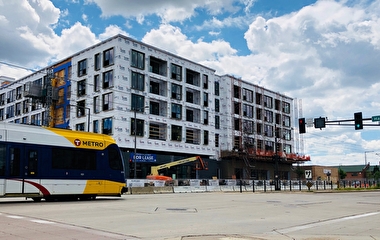Access to opportunities such as jobs and services is one of the main benefits of public transit. To ensure this benefit is maximized, transportation planners are increasingly seeking to distribute transportation resources as fairly as possible in order to provide a variety of options to commuters and increase their access to opportunities.
Typically, transportation accessibility is measured using the number of opportunities that can be reached within a given time threshold. For example, a planner might look at how many jobs residents of a socially disadvantaged neighborhood can reach within 45 minutes to see where improvements might be needed. However, these traditional accessibility measurements have a significant shortcoming.
“Research shows us that low-income and socially disadvantaged individuals are the most likely to be transit dependent and face barriers to accessing their desired destinations,” says David Levinson, a professor in the Department of Civil, Environmental and Geo- Engineering. “If we only look at time as a constraint on accessibility, we leave the crucial factor of financial access out of the equation. For low-income populations, transit fares can present a major barrier to accessibility, since fares can consume a large share of individuals’ budgets. As a result, planners and researchers may overestimate job accessibility, particularly for low-income riders.”
In recent research, Levinson and his co-authors developed a set of innovative accessibility measures that incorporate both travel time and transit fares. Then, they applied those measures to determine whether people living in socially disadvantaged neighborhoods—in this case, in Montreal, Canada—experienced the same levels of transit accessibility as those living in other neighborhoods. Finally, they compared the results of their new measurement with traditional accessibility measures that account only for travel time.
“We found that accessibility measures relying solely on travel time estimate a higher number of jobs than our measure,” says Levinson. “For the most socially disadvantaged residents, factoring in a single fare reduces job accessibility 50 percent; adding a monthly pass reduces it 30 percent.”
The study also found that public transit generally favors vulnerable populations in Montreal. “Low-income populations generally reside in the central city, near transit stations and job concentrations. Higher-income populations are concentrated in suburban areas, and suburban fares are much more expensive. So in this case, residents of socially disadvantaged areas have more equitable accessibility to jobs even when fare cost is included,” he explains.
The new accessibility measure offers several benefits for transportation planners, Levinson says. First, it will allow them to better explain to policymakers the number of jobs a resident can reach for a given cost, thereby allowing fare structures and hourly wages to be judged against the cost of commuting. In addition, it can help planners identify neighborhoods that need transportation benefits the most and provide broader insight for the transportation community into how combined measures of accessibility can be used to better understand the impact of transportation planning decisions.
This research was conducted as a collaboration between Levinson and the Transportation Research at McGill (TRAM) group, which is led by Ahmed El-Geneidy, associate professor at McGill University in Montreal and a former U of M researcher.



